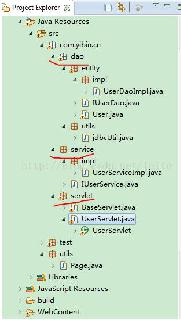vue實(shí)現(xiàn)檢測(cè)敏感詞過(guò)濾組件的多種思路
在做商戶(hù)端敏感詞檢測(cè)的過(guò)程中,發(fā)現(xiàn)了一些問(wèn)題,特在此總結(jié)。本文的行文思路是編寫(xiě)敏感詞檢測(cè)代碼,前兩個(gè)思路未采用組件化的開(kāi)發(fā)思想,后三個(gè)思路根據(jù)需求變更,采用組件化的思想和mixins混入進(jìn)行開(kāi)發(fā)。
需求分析v1在商戶(hù)端產(chǎn)品模塊,點(diǎn)擊產(chǎn)品編輯按鈕,可以修改產(chǎn)品的標(biāo)題和價(jià)格。當(dāng)沒(méi)有填寫(xiě)產(chǎn)品標(biāo)題時(shí),置灰保存按鈕;當(dāng)填寫(xiě)的產(chǎn)品標(biāo)題屬于敏感詞時(shí),置灰保存按鈕并給出后端返回的提示。

在商戶(hù)端定制模塊,定制完成后,直接跳轉(zhuǎn)到產(chǎn)品編輯頁(yè)面,可以修改產(chǎn)品標(biāo)題和價(jià)格。當(dāng)沒(méi)有填寫(xiě)產(chǎn)品標(biāo)題時(shí),置灰保存按鈕;當(dāng)填寫(xiě)的產(chǎn)品標(biāo)題屬于敏感詞時(shí),置灰保存按鈕并給出后端返回的提示。

因?yàn)楸救素?fù)責(zé)的是產(chǎn)品模塊,不知道定制模塊的產(chǎn)品標(biāo)題也需要增加敏感詞檢測(cè),所以最開(kāi)始并沒(méi)有將敏感詞檢測(cè)寫(xiě)成組件。于是有了第一種思路:使用截流方法監(jiān)聽(tīng)輸入框的input事件。
思路:
1.只要輸入不為空或者全是空格,每次輸入后都會(huì)觸發(fā)輸入框的input事件,調(diào)用敏感詞檢測(cè)接口。頻繁地請(qǐng)求接口會(huì)給服務(wù)器造成巨大的壓力,因此可以使用截流方法降低接口請(qǐng)求的頻率;
2.為請(qǐng)求的接口增加一個(gè)定時(shí)器,并添加一個(gè)倒計(jì)時(shí)間,記為1s,每次輸入后都延遲1s請(qǐng)求接口。于是可以在輸入框的input事件觸發(fā)后,清除掉上一個(gè)定時(shí)器。防止定時(shí)器疊加,重復(fù)請(qǐng)求多次接口,只保留最后一次input事件觸發(fā)的敏感詞檢測(cè)的接口請(qǐng)求。這也就意味著,如果用戶(hù)連續(xù)輸入產(chǎn)品標(biāo)題,且每次輸入的間隔時(shí)間小于1s,則用戶(hù)最后一次輸入的信息會(huì)被接口檢測(cè)是否合乎敏感詞規(guī)范;如果用戶(hù)間隔著輸入產(chǎn)品標(biāo)題,且間隔時(shí)間都超過(guò)1s,則會(huì)發(fā)起多次接口請(qǐng)求,還是會(huì)對(duì)服務(wù)器造成不小的壓力,所以這種方法還是存在局限性。
//敏感詞檢測(cè)的html<div class='edit-title'>產(chǎn)品標(biāo)題</div> <el-input v-model='productName' placeholder='請(qǐng)輸入產(chǎn)品標(biāo)題' type='text' auto-complete='on' clearable @input='inspectSpams' /><div v-if='showMessage' class='message'>{{ errorMessage }}</div>//保存按鈕的html<el-button type='primary' @click='save' :disabled='productName === ’’ || showMessage === true'>保存</el-button>
data() { return { productName: ’’, errorMessage: ’’, showMessage: false, timer: -1 } }, methods: { inspect() { if(this.productName.trim() !== ’’) {this.$store.dispatch(’products/inspectSpams’, this.productName).catch((err)=>{ this.errorMessage = err.response.data.message this.showMessage = true}) } }, inspectSpams() { this.showMessage = false clearTimeout(this.timer) this.timer = setTimeout(() => {this.inspect() }, 1000) } }
缺陷: 當(dāng)為產(chǎn)品標(biāo)題添加敏感詞后,只要手速足夠快,在1s內(nèi)點(diǎn)擊保存按鈕,還是可以成功保存敏感詞,這與我們的需求相違背。
思路二:使用輸入框的失焦和保存按鈕的點(diǎn)擊事件既然使用輸入框的input事件存在問(wèn)題,那是否能夠使用輸入框的失焦事件和保存按鈕的點(diǎn)擊事件呢?答案是可以的。只不過(guò)在這個(gè)過(guò)程中,有兩個(gè)問(wèn)題需要特別注意。
注意事項(xiàng):
需要理解失焦事件。 何為失焦?在輸入框內(nèi)輸入完標(biāo)題之后,點(diǎn)擊輸入框外的任意地方都會(huì)觸發(fā)失焦事件。所以,千萬(wàn)不要忘記點(diǎn)擊保存按鈕同樣會(huì)觸發(fā)失焦事件。因此,只需要在輸入框失焦事件中請(qǐng)求敏感詞檢測(cè)接口,無(wú)需在點(diǎn)擊事件中重復(fù)請(qǐng)求。 需要考慮觸發(fā)失焦事件和點(diǎn)擊事件帶來(lái)的的異步問(wèn)題。 點(diǎn)擊保存按鈕會(huì)同時(shí)觸發(fā)失焦事件和點(diǎn)擊事件,失焦事件會(huì)優(yōu)先點(diǎn)擊事件執(zhí)行。失焦事件用于請(qǐng)求敏感詞檢測(cè)接口,點(diǎn)擊事件用于修改產(chǎn)品信息。交互邏輯是先請(qǐng)求敏感詞檢測(cè)接口,如果接口返回的狀態(tài)是成功,則不需要顯示錯(cuò)誤提示信息;否則需要顯示后端返回的錯(cuò)誤信息,并禁用保存按鈕。待校驗(yàn)成功之后再請(qǐng)求修改產(chǎn)品信息的接口。因此,這兩個(gè)方法是存在一個(gè)先后順序的。而且一定是失焦事件請(qǐng)求敏感詞接口在前,請(qǐng)求修改產(chǎn)品信息在敏感詞接口請(qǐng)求結(jié)束之后。不能因?yàn)槊舾性~檢測(cè)過(guò)慢導(dǎo)致非法的敏感詞已經(jīng)成功保存并渲染,此時(shí)再請(qǐng)求敏感詞檢測(cè)接口是沒(méi)必要的。由于無(wú)法確定和保證兩個(gè)接口的,所以需要增加一個(gè)變量來(lái)判斷敏感詞接口是否請(qǐng)求結(jié)束。如果接口沒(méi)有請(qǐng)求結(jié)束,需要在點(diǎn)擊事件中重新發(fā)起請(qǐng)求;如果接口已經(jīng)完成請(qǐng)求,則直接return忽略掉。思路:
為輸入框添加失焦事件; 為保存按鈕添加點(diǎn)擊事件。代碼:
<div class='edit-title'>產(chǎn)品標(biāo)題</div> <el-input v-model='productName' placeholder='請(qǐng)輸入產(chǎn)品標(biāo)題' type='text' auto-complete='on' clearable @blur='inspectSpams' /> <div v-if='showMessage' class='message'>{{ errorMessage }}</div> <el-button type='primary' @click='save' :disabled='!productName || showMessage'>保存</el-button>
data() { return { showMessage: false, productName: ’’, errorMessage: ’’, timer: -1, hasVerified: false } }, methods: { //失焦事件(請(qǐng)求敏感詞檢測(cè)接口) async inspectSpams() { this.hasVerified = false this.showMessage = false if(this.productName.trim() !== ’’) { await this.$store.dispatch(’products/inspectSpams’, this.productName).catch((err) => { this.errorMessage = err.response.data.message this.showMessage = true }) } this.hasVerified = true }, //點(diǎn)擊事件(請(qǐng)求修改產(chǎn)品信息接口) async save() { if(!this.hasVerified) {await this.inspectSpams() } const variants = this.variants.map((variant) => { return { id: variant.id, price: variant.price, } }) const params = { variants, name: this.productName } params.productId = this.productId await this.$store.dispatch(’products/editProduct’, params) .then(async() => { await this.getProductListData(this.productStatus, 1) this.$message({ type: ’success’, message: ’產(chǎn)品修改成功!’ }) }) .catch((message) => { this.$message({ type: ’error’, message }) }) this.showEditProductDialog = false } }思路三:使用mixins抽取敏感詞檢測(cè)方法
本以為敏感詞檢測(cè)就這樣離我而去了,結(jié)果收到產(chǎn)品消息,同樣需要給定制模塊的產(chǎn)品標(biāo)題增添敏感詞檢測(cè)。之后就是一頓ctrl+c和ctrl+v操作猛如虎,最后發(fā)現(xiàn)代碼冗余過(guò)多,需要對(duì)代碼進(jìn)行整理。此處和后續(xù)都只寫(xiě)產(chǎn)品模塊的敏感詞檢測(cè)邏輯,定制模塊的敏感詞檢測(cè)邏輯其實(shí)和產(chǎn)品模塊大同小異。 既然定制模塊的產(chǎn)品標(biāo)題編輯和產(chǎn)品模塊的樣式和邏輯相差無(wú)幾,那何不抽取敏感詞檢測(cè)公共方法呢?就這么愉快地決定了,鍵盤(pán)上一頓狂敲亂打后,混入方法就成型了:
export default {data() { return { hasVerified: false, showMessage: false, errorMessage: ’’ } }, methods: { async inspectSpams(name) { this.hasVerified = false this.showMessage = false if(name.trim() !== ’’) { await this.$store.dispatch(’products/inspectSpams’, name).catch((err) => { this.errorMessage = err.response.data.message this.showMessage = true }) } this.hasVerified = true } }}
<div class='edit-title'>產(chǎn)品標(biāo)題</div><el-input v-model='productName' placeholder='請(qǐng)輸入產(chǎn)品標(biāo)題' type='text' auto-complete='on' clearable @blur='inspectSpams(productName)'/><div v-if='showMessage' class='message'>{{ errorMessage }}</div><el-button type='primary' @click='save' :disabled='!productName || showMessage'>保存</el-button>
import inspectSpams from ’@/mixins/inspectSpams’export default { data() { return { productName: ’’ } }, mixins: [ inspectSpams ], methods: {//點(diǎn)擊事件(請(qǐng)求修改產(chǎn)品信息接口)async save() { if(!this.hasVerified) { await this.inspectSpams(this.productName) } const variants = this.variants.map((variant) => { return { id: variant.id, price: variant.price, } }) const params = { variants, name: this.productName } params.productId = this.productId await this.$store.dispatch(’products/editProduct’, params) .then(async() => { await this.getProductListData(this.productStatus, 1) this.$message({type: ’success’,message: ’產(chǎn)品修改成功!’ }) }) .catch((message) => { this.$message({type: ’error’,message }) }) this.showEditProductDialog = false} }}思路四:使用promise封裝敏感詞檢測(cè)組件(面向需求v1)
考慮到產(chǎn)品模塊敏感詞檢測(cè)和定制模塊的html結(jié)構(gòu)相差無(wú)幾,決定封裝一個(gè)敏感詞檢測(cè)組件,將產(chǎn)品標(biāo)題敏感詞檢測(cè)的html代碼和業(yè)務(wù)邏輯放在一起。但在這個(gè)過(guò)程中,有三個(gè)問(wèn)題需要特別注意:
注意事項(xiàng):
async函數(shù)返回的是一個(gè)promise對(duì)象; 不能直接修改傳入的props值,但是可以通過(guò)中間變量,將中間變量和props雙向綁定,從而間接地修改props的值; 可以在父組件給props增加sync修飾符,在子組件中對(duì)props和中間變量進(jìn)行監(jiān)聽(tīng)。如果任意一方的值發(fā)生變化,都會(huì)將改變后的值賦予給另一方,從而達(dá)到雙向綁定的目的。思路:
編寫(xiě)敏感詞檢測(cè)組件; 引入敏感詞檢測(cè)組件。//敏感詞檢測(cè)組件<template> <div><el-input v-model='input' placeholder='請(qǐng)輸入產(chǎn)品標(biāo)題' type='text' clearable @blur='inspectSpams' /><div v-if='isShowMessage' class='message'>{{ errorMessage }}</div> </div></template><script>export default { props: {title: { required: true, type: String} }, data() {return { input: ’’, isShowMessage: false, errorMessage: ’’, hasVerified: true} }, watch: {title: { handler(val) {this.input = val }, immediate: true},input(val) { this.$emit(’update:title’, val)} }, methods: {async inspectSpams() { this.hasVerified = false this.isShowMessage = false if (this.input !== ’’) {await this.$store.dispatch(’products/inspectSpams’, this.input).catch((err) => { this.errorMessage = err.response.data.message this.isShowMessage = true}) } this.hasVerified = true},init() { this.isShowMessage = false},async verify() { if (!this.hasVerified) {await this.inspectSpams() } const emptyInput = this.input.trim() if (emptyInput === ’’) {this.isShowMessage = truethis.errorMessage = ’請(qǐng)輸入產(chǎn)品名稱(chēng)’ } return new Promise((resvole, reject) => {if (Boolean(!emptyInput || this.isShowMessage)) { reject()} else { resvole()} })} }}</script><style>.message { font-weight: bold; color: red; margin-top: 10px;}</style>
//引入敏感詞檢測(cè)組件<script>import { mapState } from ’vuex’import InspectSpams from ’@/components/InspectSpams’export default { name: ’List’, components: { InspectSpams }, data() { return { productName: ’’ } }, computed: { ...mapState({ variants: (state) => state.products.detail.variants }), }, methods: { save() { this.$refs.productSpamsRef.verify() .then(async()=>{ const variants = this.variants.map((variant) => { return { id: variant.id, price: variant.price, } }) const params = { variants, name: this.productName } params.productId = this.productId await this.$store.dispatch(’products/editProduct’, params) .then(async() => { await this.getProductListData(this.productStatus, 1) this.$message({ type: ’success’, message: ’產(chǎn)品修改成功!’ }) }) this.showEditProductDialog = false }) .catch(()=>{ this.$message({ type: ’error’, message: ’請(qǐng)輸入合法的產(chǎn)品名稱(chēng)’ }) }) }, getProductListData(status, page) { this.$store.dispatch(’products/getList’, { limit: 16, status, order: ’id’, direction: ’desc’, page }) }}</script><template> <div> <div class='edit-title'>產(chǎn)品標(biāo)題</div> <InspectSpams :title.sync='productName' ref='productSpamsRef' /> <el-button type='primary' @click='save'>保存</el-button> </div></template>思路五:使用插槽和mixins封裝敏感詞檢測(cè)組件(面向需求v2)
需求變更: 其實(shí)相比需求v1來(lái)說(shuō),也沒(méi)發(fā)生什么變化。只是產(chǎn)品模塊的產(chǎn)品標(biāo)題必須得填寫(xiě),不然得禁止保存按鈕,而定制模塊的產(chǎn)品標(biāo)題可以不填寫(xiě),保存后默認(rèn)為填寫(xiě)的產(chǎn)品標(biāo)題 + 白板名稱(chēng)。
思路: 既然如此,何不把給錯(cuò)誤提示的html放入一個(gè)組件中,使用插槽占位表示需要檢測(cè)的字段,而將敏感詞檢測(cè)的邏輯放到mixins中。后續(xù)如果還有其它地方需要進(jìn)行敏感詞檢測(cè),會(huì)顯得更加靈活,其實(shí)這樣反倒更利于組件的復(fù)用原則。
//敏感詞檢測(cè)組件<template> <div> <slot /> <div v-if='isShowMessage' class='message'> {{ errorMessage }} </div> </div></template><script>export default { props: { isShowMessage: { required: true, type: Boolean }, errorMessage: { required: true, type: String } }}</script><style>.message { font-weight: bold; color: red; margin-top: 10px;}</style>
//敏感詞檢測(cè)的mixinsexport default { data() { return { isShowMessage: false, errorMessage: ’’, hasVerified: true } }, methods: { async inspectSpams(name) { this.hasVerified = false this.isShowMessage = false if (name.trim() !== ’’) { await this.$store.dispatch(’products/inspectSpams’, name).catch((err) => { this.errorMessage = err.response.data.message this.isShowMessage = true }) } this.hasVerified = true } }}
import InspectSpams from ’@/components/InspectSpams’import inspectSpams from ’@/mixins/inspectSpams’components: { InspectSpams},mixins: [ inspectSpams ],async save() { if(!this.hasVerified) { await this.inspectSpams(this.productName) } const variants = this.variants.map((variant) => { return { id: variant.id, price: variant.price, } }) const params = { variants, name: this.productName } params.productId = this.productId await this.$store.dispatch(’products/editProduct’, params) .then(async() => { await this.getProductListData(this.productStatus, 1) this.$message({ type: ’success’, message: ’產(chǎn)品修改成功!’ }) }) .catch((message) => { this.$message({ type: ’error’, message }) }) this.showEditProductDialog = false }, <div class='edit-title'>產(chǎn)品標(biāo)題</div><InspectSpams :isShowMessage='isShowMessage' :errorMessage='errorMessage'> <el-input v-model='productName' placeholder='請(qǐng)輸入產(chǎn)品標(biāo)題' type='text' auto-complete='on' clearable @blur='inspectSpams(productName)' /></InspectSpams>優(yōu)化與改進(jìn)
1.優(yōu)化調(diào)用敏感詞檢測(cè)的條件。如果產(chǎn)品標(biāo)題沒(méi)有發(fā)生變化,則不需要再請(qǐng)求敏感詞檢測(cè)接口。因?yàn)橹挥薪?jīng)過(guò)檢驗(yàn)成功的標(biāo)題才能被成功保存,所以無(wú)需多次重復(fù)調(diào)用接口,需要修改mixins請(qǐng)求接口的條件。
思路: 在根據(jù)產(chǎn)品id打開(kāi)模態(tài)框請(qǐng)求產(chǎn)品詳情接口的過(guò)程中,將對(duì)應(yīng)產(chǎn)品信息的name字段賦值給新增的originalName變量。在html和js調(diào)用混入方法inspectSpams的過(guò)程中,將originalName和productName作為變量傳入即可。
//修改后的mixins混入export default { data() {return { isShowMessage: false, errorMessage: ’’, hasVerified: true} }, methods: {async inspectSpams(originalName, currentName) { this.hasVerified = false this.isShowMessage = false if (originalName !== currentName && currentName.trim() !== ’’) {await this.$store.dispatch(’products/inspectSpams’, currentName).catch((err) => { this.errorMessage = err.response.data.message this.isShowMessage = true}) } this.hasVerified = true} }}
2.多次點(diǎn)擊按鈕會(huì)重復(fù)請(qǐng)求接口。可以使用防抖、按鈕啟用倒計(jì)時(shí)、封裝axios請(qǐng)求、給button設(shè)置loading等方式進(jìn)行優(yōu)化。
寫(xiě)在最后其實(shí)總結(jié)得不是很好,編寫(xiě)的組件也不夠好,思路也不太清晰,記錄在這里主要是對(duì)思路二和思路四做個(gè)總結(jié),畢竟對(duì)vue的文檔還是不太熟悉。在敏感詞檢測(cè)組件中,其實(shí)還有很多可以改進(jìn)的地方,歡迎大家在評(píng)論區(qū)中指出。
以上就是vue編寫(xiě)檢測(cè)敏感詞匯組件的多種思路的詳細(xì)內(nèi)容,更多關(guān)于vue編寫(xiě)檢測(cè)敏感詞匯組件的資料請(qǐng)關(guān)注好吧啦網(wǎng)其它相關(guān)文章!
相關(guān)文章:
1. JavaScript實(shí)現(xiàn)組件化和模塊化方法詳解2. CSS hack用法案例詳解3. JSP+Servlet實(shí)現(xiàn)文件上傳到服務(wù)器功能4. jsp實(shí)現(xiàn)登錄界面5. 小技巧處理div內(nèi)容溢出6. ASP.NET泛型三之使用協(xié)變和逆變實(shí)現(xiàn)類(lèi)型轉(zhuǎn)換7. layui Ajax請(qǐng)求給下拉框賦值的實(shí)例8. Javaweb工程運(yùn)行報(bào)錯(cuò)HTTP Status 404解決辦法9. ASP.NET MVC通過(guò)勾選checkbox更改select的內(nèi)容10. .NET SkiaSharp 生成二維碼驗(yàn)證碼及指定區(qū)域截取方法實(shí)現(xiàn)

 網(wǎng)公網(wǎng)安備
網(wǎng)公網(wǎng)安備